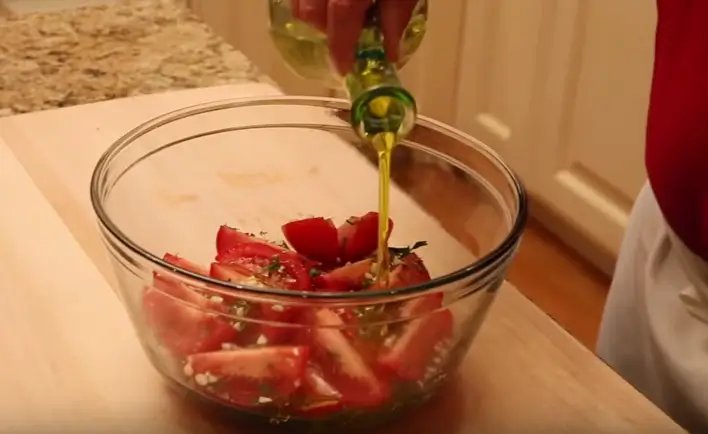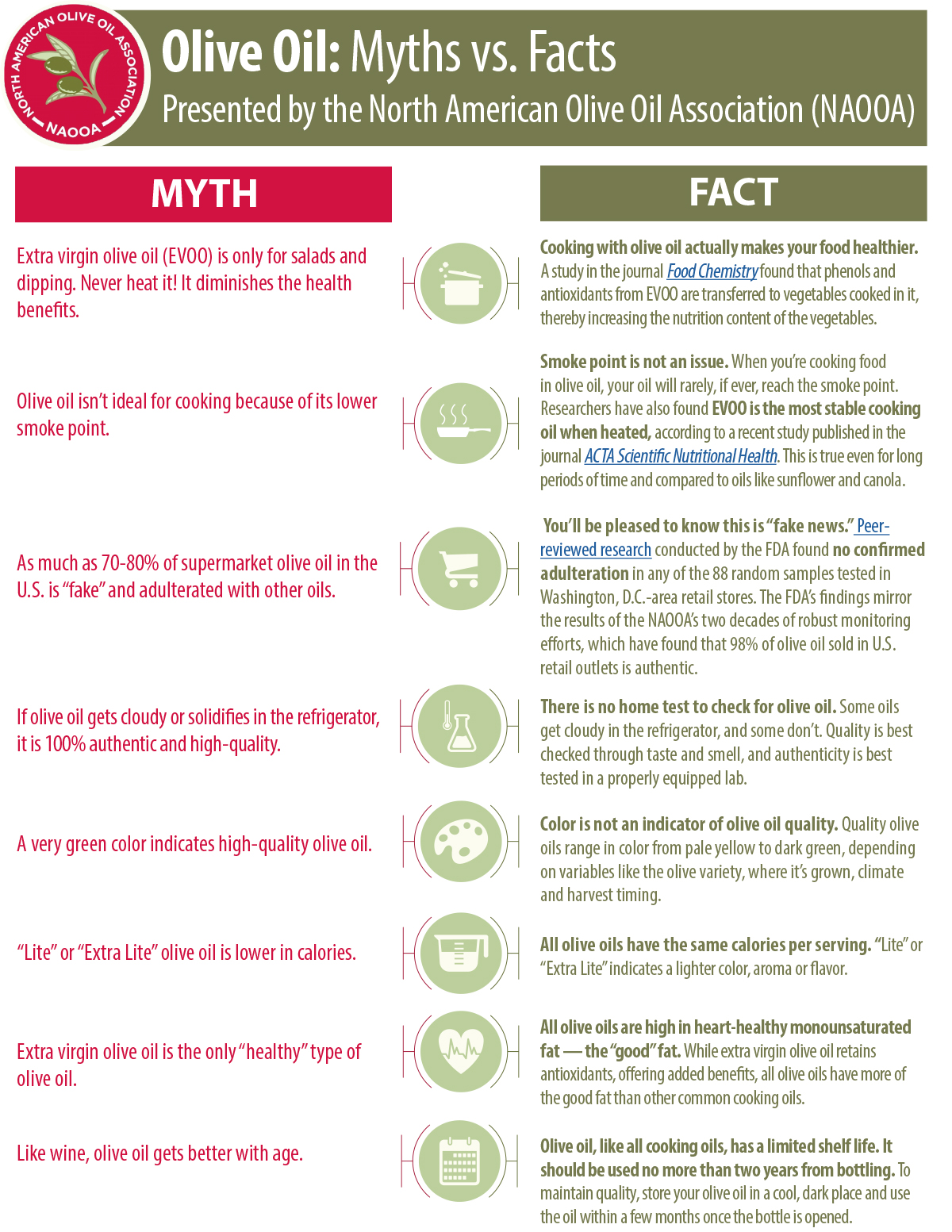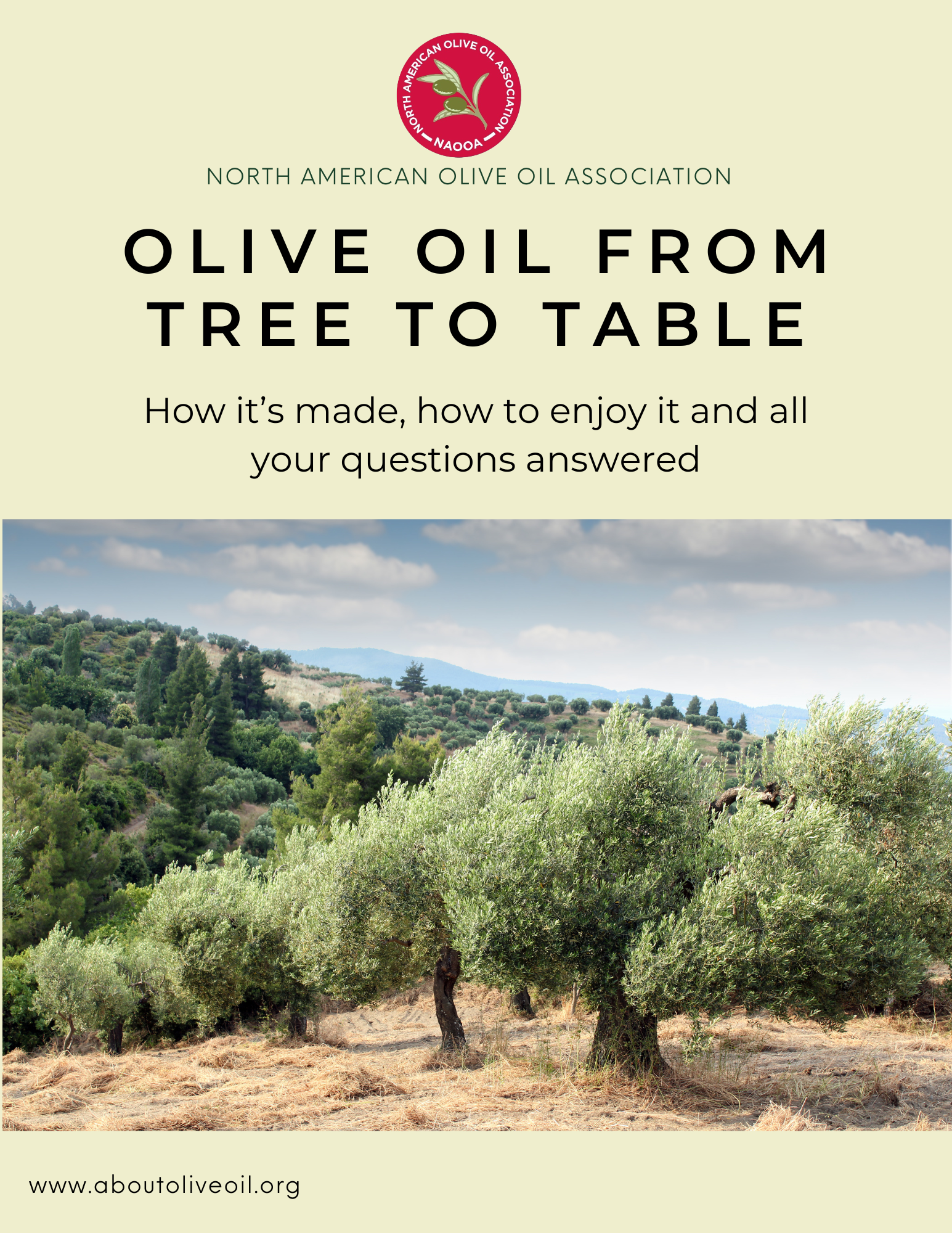
Saturated fat, trans fat and cholesterol are associated with foods like butter, margarine, lard and coconut oil. Substituting olive oil for butter or margarine in recipes will reduce both saturated fat and cholesterol. And, you use less olive oil, which cuts calories too! Remember to use extra virgin olive oil for the most flavor and olive oil to avoid changing the flavor – this even works for baking, especially when the recipe calls for melted butter. Just use this handy conversion chart.
Consuming salad greens and vegetables along with a monounsaturated fat such as olive oil actually increases the body’s absorption of total nutrients as shown in one 2012 study.[1] A tasty option to consider is this Vegetable Frittata, which is made without any butter and also includes a wealth of vegetables to start your day off well.
Another instigator of heart disease, cancers and inflammation-related conditions is excessive consumption of Omega-6 and a high Omega-6 to Omega-3 ratio. A healthy diet including fish, nuts, herbs and vegetables can help increase Omega-3s, and Omega-6s can be reduced by avoiding vegetable oils like corn, sunflower, peanut and soybean. Olive oil, which is primarily oleic acid (Omega 9) can be substituted for vegetable oils in any recipe using the same amount. This Day Boat Cod with Olive Oil Melted Tomatoes and Orange Fennel Salad contains a great mix of heart-healthy, anti-inflammatory ingredients – and tastes fabulous too!
All good things can be enjoyed in moderation, especially when simple substitutions for more healthful choices become part of your regular routine. You can feel good about choosing olive oil as the primary fat in your cooking and at the same time savor food that tastes great!
Watch Video on Olive Oil and Healthy Eating
[1] Goltz SR et al. Meal Triacylglycerol Profile Modulates Postprandial Absorption of Carotenoids in Humans. Mol Nutr Food Res 2012; 56:866–877






